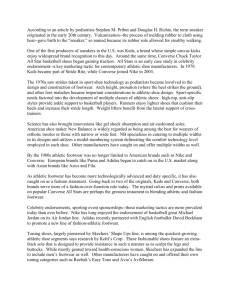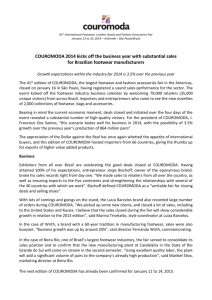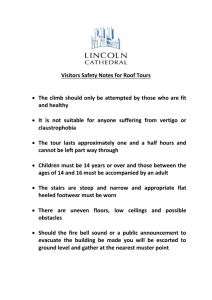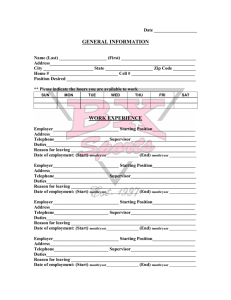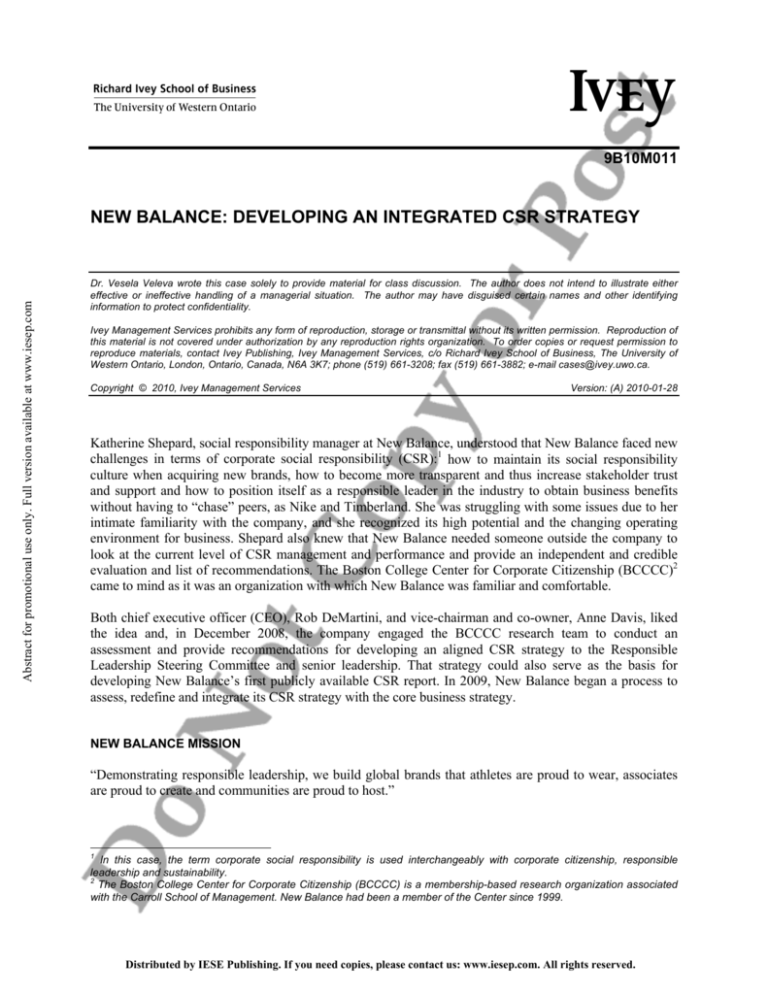
S
w
9B10M011
Abstract for promotional use only. Full version available at www.iesep.com
NEW BALANCE: DEVELOPING AN INTEGRATED CSR STRATEGY
Dr. Vesela Veleva wrote this case solely to provide material for class discussion. The author does not intend to illustrate either
effective or ineffective handling of a managerial situation. The author may have disguised certain names and other identifying
information to protect confidentiality.
Ivey Management Services prohibits any form of reproduction, storage or transmittal without its written permission. Reproduction of
this material is not covered under authorization by any reproduction rights organization. To order copies or request permission to
reproduce materials, contact Ivey Publishing, Ivey Management Services, c/o Richard Ivey School of Business, The University of
Western Ontario, London, Ontario, Canada, N6A 3K7; phone (519) 661-3208; fax (519) 661-3882; e-mail cases@ivey.uwo.ca.
Copyright © 2010, Ivey Management Services
Version: (A) 2010-01-28
Katherine Shepard, social responsibility manager at New Balance, understood that New Balance faced new
challenges in terms of corporate social responsibility (CSR):1 how to maintain its social responsibility
culture when acquiring new brands, how to become more transparent and thus increase stakeholder trust
and support and how to position itself as a responsible leader in the industry to obtain business benefits
without having to “chase” peers, as Nike and Timberland. She was struggling with some issues due to her
intimate familiarity with the company, and she recognized its high potential and the changing operating
environment for business. Shepard also knew that New Balance needed someone outside the company to
look at the current level of CSR management and performance and provide an independent and credible
evaluation and list of recommendations. The Boston College Center for Corporate Citizenship (BCCCC)2
came to mind as it was an organization with which New Balance was familiar and comfortable.
Both chief executive officer (CEO), Rob DeMartini, and vice-chairman and co-owner, Anne Davis, liked
the idea and, in December 2008, the company engaged the BCCCC research team to conduct an
assessment and provide recommendations for developing an aligned CSR strategy to the Responsible
Leadership Steering Committee and senior leadership. That strategy could also serve as the basis for
developing New Balance’s first publicly available CSR report. In 2009, New Balance began a process to
assess, redefine and integrate its CSR strategy with the core business strategy.
NEW BALANCE MISSION
“Demonstrating responsible leadership, we build global brands that athletes are proud to wear, associates
are proud to create and communities are proud to host.”
1
In this case, the term corporate social responsibility is used interchangeably with corporate citizenship, responsible
leadership and sustainability.
2
The Boston College Center for Corporate Citizenship (BCCCC) is a membership-based research organization associated
with the Carroll School of Management. New Balance had been a member of the Center since 1999.
Distributed by IESE Publishing. If you need copies, please contact us: www.iesep.com. All rights reserved.
Page 2
9B10M011
Abstract for promotional use only. Full version available at www.iesep.com
INTRODUCTION
In October 2008, Shepard was driving to the Burlington, Vermont area to spend the weekend with her
family. As she was enjoying the beautiful foliage, she recalled her first experience with New Balance 18
years earlier. It was an uncomfortably hot August day in Boston, but Shepard was determined to get her
father a birthday present. Since he wanted some running shoes, she took him to a nearby retail outlet.
Being surrounded by hundreds of sneakers that all looked very much the same was an overwhelming
experience for her father, and for her as well. After a moment of silence, Shepard’s father said to the
salesman, “Tell me which ones are made in the U.S.” The salesman immediately suggested New Balance
shoes. They had never heard of the brand before but Shepard’s father liked the fit and style and they
walked out with a birthday gift — a pair of New Balance sneakers. That “made in USA” label made it an
easy decision and became something that Shepard remembered.
A year later, in the spring of 1991, Shepard was looking for a new job. She saw a newspaper advertisement
from New Balance looking for a corporate communications manager. The job description seemed a perfect
fit, and she already knew one thing about the company that was very important to her and her family: New
Balance was committed to domestic manufacturing. She applied for the job and, after an extensive
interview process, joined New Balance later that year. A few years later she was promoted to senior
corporate communications manager and in 2007, she became the social responsibility manager for New
Balance (see Exhibit 1).
Since its founding more than 100 years ago, New Balance had followed its mission and demonstrated
social responsibility to its employees and communities where it had operations. A strong culture of “doing
the right thing” was developed and maintained over the years, as New Balance remained the only large
footwear manufacturer with production in the United States. With rapid growth in the late 1990s, however,
the company turned into a global brand, which required moving CSR to the next level — from “doing
what’s right” to fully integrating CSR into the business strategy.
NEW BALANCE: HISTORY AND BUSINESS OVERVIEW
New Balance was founded in Boston in 1906, when a 33-year-old waiter named William J. Riley began
building arch supports to alleviate pain for people who spent all day on their feet. In 1925, Riley designed
his first running shoe for a Boston running club, known as the Boston Brown Bag Harriers. The shoe was
so successful that in the 1940s, New Balance began making custom shoes for running, baseball, basketball,
tennis and boxing. In 1960, it began manufacturing running shoes in multiple widths and significantly
expanded production.
In 1972, New Balance was purchased by James Davis, who remained the owner together with his wife
Anne (in 2009, James was New Balance chairman and Anne was vice-chairman and executive vicepresident, administration: see Exhibit 2). After graduating from Middlebury College in 1964, James Davis
worked as a sales representative for an electronics firm, but his long-term objective was to own and
manage his own business. A friend told him about New Balance, whose owner at the time, Paul Kidd, was
looking to sell the business. After doing some research on the company, talking with athletic coaches in
New England and trying the New Balance sneakers himself, he was convinced of the high potential for the
company: “I felt leisure-time products would be a high-growth market, and I found that New Balance had a
Distributed by IESE Publishing. If you need copies, please contact us: www.iesep.com. All rights reserved.
Page 3
9B10M011
Abstract for promotional use only. Full version available at www.iesep.com
good product,” he recalled. “After running in them myself I was very impressed with the shoe.”3 Using his
own savings and taking a long-term bank loan, Davis purchased New Balance for $100,000.4
Sports shoes remained the focus of New Balance business operations, and the company experienced
tremendous growth over the next 37 years. This growth was especially significant in the late 1990s, when
the company began a series of acquisitions involving various brands, such as Dunham, Warrior and Brine,5
among others. In 2009, New Balance was a global company with 4,100 employees worldwide (2,634 of
them in the United States) and sales of $1.61 billion in 2008 (see Exhibit 3). It was the second-largest
manufacturer of athletic footwear in the United States after Nike, and the fourth largest in the world (see
Exhibit 4). The company was the only global footwear manufacturer with production in the United States
(about 25 per cent of production). It had five company-owned factories in the United States — Boston and
Lawrence, Massachusetts, and Norridgewock, Norway and Skowhegan, Maine — and one in the United
Kingdom. It had approximately 200 footwear suppliers in the United States, the United Kingdom, China,
Vietnam, Indonesia, Mexico, Japan, Taiwan and Cambodia.
In addition to footwear, New Balance had a small but growing apparel and accessories business (less than
five per cent of sales in 2008). The apparel and accessories were manufactured through suppliers and
licensees from 27 countries around the world, including the United States, China and Taiwan.
New Balance was probably best known among consumers for its “Endorsed by No One” campaign. While
it saw athletes as its critical market segment, in contrast with much of the industry, the company chose not
to spend money on endorsements from individual professional or “celebrity” athletes or use them in
advertisements.
In 2006, New Balance implemented a lean production system6 (modeled after Toyota’s lean
manufacturing) in all domestic operations, which led to significant productivity improvements and reduced
waste, worker exposures and costs; for example, the time it took to make a pair of shoes in the Lawrence
facility was reduced from eight days to three hours. Between the years 2005 and 2009, productivity
improved 49 per cent as a result of waste reductions. Associates were trained and encouraged to make
suggestions for continuous improvements. In 2007, a new CEO from the consumer product industry, Rob
DeMartini, was brought on board to lead the company on the journey to becoming a truly global brand.
FOOTWEAR INDUSTRY OVERVIEW AND CSR DRIVERS
In 2009, the U.S. footwear industry consisted of approximately 100 manufacturers, 1,500 wholesalers and
30,000 retail outlets with a combined annual revenue of $25 billion.7 Major brands, such as Nike, Reebok,
Brown Shoe and Timberland, were mainly owners of brand names that sourced their shoes from
independent manufacturers. The retail chain market was highly concentrated: the largest 50 chains
represented approximately 80 per cent of the market.
3
Kim B. Clark, “New Balance Athletic Shoes,” Harvard Business School Publishing, 1980, p. 680-710.
All funds are in US$ unless otherwise stated.
5
The acquired brands included men’s traditional and everyday shoes, apparel, footwear and equipment for lacrosse, hockey
and volleyball, among other sports.
6
Lean production was pioneered by Toyota and represents flexible manufacturing technologies to deliver goods on demand,
minimize inventory, maximize the use of multi-skilled employees, flatten management structure, and focus resources when
and where they were needed.
7
Source: Hoovers, “Industry Overview: Footwear Manufacture, Wholesale and Retail,” www.hoovers.com/footwearmanufacture,-wholesale,-and-retail-/--ID__130--/free-ind-fr-profile-basic.xhtml.2009, accessed December 4, 2009.
4
Distributed by IESE Publishing. If you need copies, please contact us: www.iesep.com. All rights reserved.
Page 4
9B10M011
Abstract for promotional use only. Full version available at www.iesep.com
One extremely important factor in the footwear business was the logistics of delivering product to retailers.
Manufacturers had to be able to respond to requests within days or even hours; therefore, most footwear
companies had several distribution centers, typically 500,000 to one million square feet, and sophisticated
computer systems to track inventory, orders and deliveries.
Footwear demand was driven by fashion and demographics. The industry had three main segments:
athletic shoes, women’s shoes and men’s shoes, which represented 30 per cent, 25 per cent and 15 per cent,
respectively (the remaining 30 per cent was miscellaneous). Domestic manufacturing of shoes had been
rapidly declining and in 2009, it was estimated at less than $3 billion annually. The typical U.S.
manufacturer was small, with an annual revenue of $10 million and fewer than 100 employees, and able to
compete with larger companies through superior design or marketing. U.S.-made products were mostly
private-label men’s shoes. Average revenue per employee was $100,000. Materials, mainly leather,
amounted to 50 per cent of costs. Over the past two decades, footwear manufacturing had been rapidly
moving overseas to countries, such as China, because of the large labour cost savings. Despite
technological advances, footwear was still largely assembled by hand.
As a result of moving operations to developing countries with known human and labor rights violations,
the footwear and apparel sectors faced significant social and environmental challenges, underlining the
urgency of implementing an integrated CSR strategy. Companies such as Nike, Adidas, Timberland and
Gap had long recognized the costs and reputational risks of poor CSR management and had devoted staff
and resources to developing clear strategies to not only mitigate risks, but also take advantage of emerging
opportunities related to regulatory changes and consumer preferences (see Exhibit 5). Four areas of
existing or emerging issues with high potential to affect New Balance or any other company in the
footwear/apparel industry included:
•
Human and labour rights issues in the supply chain: While this was the first major CSR issue that
the industry had to face (e.g. boycott of Nike products in the 1990s), it still remained an area of top
focus in 2009. Over the years, there had been a shift in the specific issues. The initial nongovernmental organization (NGO) campaigns focused on development of codes of conduct and
implementation of supplier monitoring. In 2009, issues such as maximum work hours, health and
safety in overseas factories, use of temporary workers, transparency, responsible purchasing practices
and “exit strategies” when closing factories overseas dominated the agenda.
•
Increasing demands for transparency: While privately held companies such as New Balance did not
face the same disclosure pressures as publicly held peers, “size invites scrutiny” and demands were
growing from NGOs and other stakeholders for greater transparency (e.g. the 2008 Play Fair campaign
at the Beijing Olympics8). While not every company would be ready to disclose all suppliers as Nike
and Timberland had done,9 a greater transparency could build trust and mitigate unexpected reputation
risks from recalls or incidents in the supply chain. It also could help build an emotional bond with
ethical consumers and lead to greater customer loyalty.
8
The Play Fair campaign was an alliance of Oxfam, Global Unions, the Clean Clothes Campaign and their constituent
organizations worldwide, which aimed to push sportswear and athletic footwear companies, the International Olympics
Committee (IOC) and national governments toward eliminating the exploitation and abuse of workers in the global sporting
goods industry. For more information, see www.playfair2008.org. While Oxfam did not participate in the 2008 campaign, it
remained a member of the Play Fair Alliance.
9
The list of Timberland supplier factories in 2008 is available at
www.justmeans.com/usercontent/companydocs/docs/company_docs_1213368647.pdf; Nike’s list of suppliers in 2009 is
available at www.nikebiz.com/responsibility/documents/Dec09_Collegiate_Disclosure.pd, both accessed January 13, 2010.
Distributed by IESE Publishing. If you need copies, please contact us: www.iesep.com. All rights reserved.

